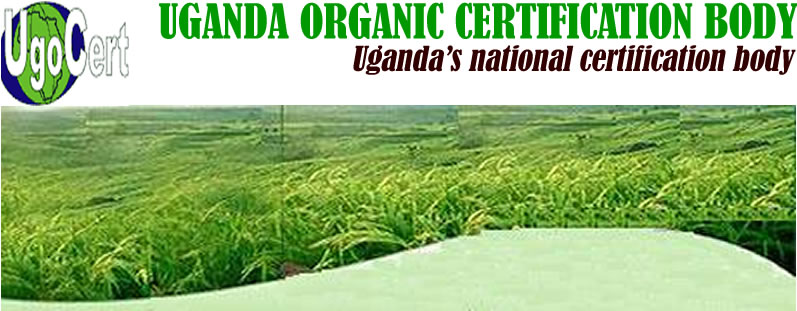Introduction: Understanding the Vital Role of Soil Health in Agriculture
In today’s rapidly changing world, the importance of soil health and sustainable agriculture practices cannot be overstated. As farmers and agricultural professionals strive to maximize crop productivity while minimizing environmental impact, the management of soil nutrients and fertility plays a crucial role.
One key aspect of soil health is nutrient management. Understanding the nutrient requirements of different crops and implementing effective strategies to supply these nutrients to the plants can significantly enhance agricultural yields. However, traditional methods often rely on excessive use of chemical fertilizers, which not only pose environmental risks but also contribute to diminishing soil fertility in the long run.
The benefits are manifold: improved water retention capacity reduces irrigation needs; enhanced nutrient cycling minimizes losses; increased biodiversity promotes pest control; healthier soils sequester carbon effectively. All these factors contribute to long-term sustainability while ensuring continued crop productivity.
As we move towards a more sustainable future for agriculture, prioritizing soil health must be at the forefront of our efforts. With advanced research and technological advancements in precision agriculture systems coupled with AI-driven solutions, farmers can now make informed decisions based on real-time data and predictive analytics. AI-powered tools provide valuable insights into soil conditions, nutrient requirements, and crop-specific recommendations, enabling farmers to optimize their management practices for maximum productivity while preserving the long-term health of our soils.
The Key Benefits of Maintaining Healthy Soils for Crop Production
Enhancing soil health is essential for sustainable agriculture and a thriving ecosystem. With the increasing demand for food production, it has become crucial to find innovative solutions that not only boost crop yields but also protect the environment. This is where practices like improving nutrient uptake, reducing soil erosion, increasing water retention, and promoting beneficial microorganisms come into play.
Furthermore, reducing soil erosion is paramount in preserving fertile topsoil. Erosion can strip away precious nutrients from the land and degrade its structure over time. By employing techniques such as contour plowing or terracing, farmers can minimize erosion and retain valuable topsoil for future cultivation.
Lastly, promoting beneficial microorganisms in the soil enhances its overall fertility. These tiny organisms play a significant role in breaking down organic matter into essential nutrients that plants can absorb easily. Techniques like composting or incorporating organic amendments aid in creating a favorable environment for these microorganisms to thrive.
The Role of Nutrient Management in Optimizing Soil Fertility and Crop Quality
Fertilizer application techniques and the choice between organic and synthetic fertilizers play a crucial role in modern agriculture. With the advancement of precision agriculture technologies, farmers now have access to innovative tools that can optimize their fertilizer usage, resulting in increased yields and reduced environmental impact. In this article, we will explore how these technologies are transforming the way fertilizers are applied, as well as the benefits and considerations when choosing between organic and synthetic fertilizers. By understanding these concepts, farmers can make informed decisions to maximize their crop productivity while maintaining sustainability in their farming practices.
Implementing Best Practices for Soil Health Management on Farms and Gardens
Implementing best practices for soil health management is crucial for ensuring the long-term sustainability and productivity of farms and gardens. With the growing awareness of the importance of sustainable agriculture, farmers and gardeners are recognizing the need to prioritize soil health as a fundamental aspect of their operations.
By adopting effective soil health management strategies, such as regular soil testing, crop rotation, and cover cropping, farmers and gardeners can enhance the fertility and structure of their soils. These practices not only improve crop yields but also promote environmental sustainability by reducing reliance on synthetic fertilizers and pesticides.
In this section, we will explore some key best practices for soil health management that can be implemented on farms and gardens. From understanding the benefits of soil testing to implementing proper crop rotation techniques and utilizing cover crops effectively – we will delve into practical ways to optimize soil health for long-term success in agricultural endeavors. Let’s dive in!
Conclusion: Prioritizing Soil Health and Nutrient Management for a Sustainable Future
Soil health and nutrient management are critical factors for ensuring a sustainable future. By prioritizing these aspects, we can enhance agricultural productivity, protect the environment, and promote food security.
The importance of soil health cannot be overstated. Healthy soils support the growth of crops by providing essential nutrients, water retention capabilities, and a favorable environment for beneficial microorganisms. However, unsustainable farming practices such as excessive use of chemical fertilizers and pesticides have led to soil degradation and loss of fertility.
To address this issue, proper nutrient management is crucial. This involves adopting sustainable practices such as organic farming, crop rotation, cover cropping, and precision agriculture techniques. These approaches not only minimize the negative impacts on soil health but also improve nutrient cycling efficiency and reduce nutrient losses to the environment.
By prioritizing soil health and nutrient management, we can achieve multiple benefits. Firstly, it ensures long-term agricultural productivity by preserving soil fertility and structure. Secondly, it mitigates environmental pollution by minimizing nutrient runoff into water bodies and reducing greenhouse gas emissions associated with fertilizer production.
Furthermore, sustainable soil management contributes to climate change adaptation and resilience. Healthy soils have better water-holding capacity, which helps crops withstand drought conditions. They also sequester carbon dioxide from the atmosphere through increased organic matter content in the soil.
In conclusion, prioritizing soil health and nutrient management is essential for a sustainable future. By implementing appropriate practices at individual farm levels as well as promoting policies that support sustainable agriculture globally, we can safeguard our soils for future generations while simultaneously ensuring food security and environmental protection.
- The Importance of Maintaining a Healthy and Balanced Ecosystem: How it Benefits Us and the EnvironmentIntroduction: Understanding the Significance of a Healthy and Balanced Ecosystem Imagine a world where nature thrives in perfect harmony, where every living organism plays a vital role in maintaining the delicate balance of our planet. This is the power of a healthy ecosystem. Ecosystems are not only beautiful and awe-inspiring, but they also serve as… Read more: The Importance of Maintaining a Healthy and Balanced Ecosystem: How it Benefits Us and the Environment
- The Importance of Embracing Environmentally Sustainable Practices for a Greener Futureenvironmentally sustainable practices, greener future, climate change, renewable energy, reduce carbon footprint, eco-friendly alternatives. In today’s world, the importance of embracing environmentally sustainable practices cannot be overstated. With the growing concern over climate change and its impact on our planet, it is crucial that we take proactive steps towards creating a greener future. One of… Read more: The Importance of Embracing Environmentally Sustainable Practices for a Greener Future
- Learn How to Check for Soil Health Issues and Improve Your Garden’s ProductivityIntroduction: The Importance of Soil Health and Its Impact on Plant Growth Ensuring soil health is crucial for optimal plant growth and garden productivity. The quality of soil directly impacts the nutrients available to plants, their ability to absorb water, and overall resilience against pests and diseases. By prioritizing soil health, gardeners can create thriving… Read more: Learn How to Check for Soil Health Issues and Improve Your Garden’s Productivity
- The Latest Developments Elsewhere: Exploring the Exciting Advancements in Various FieldsThe world we live in is constantly evolving and progressing at an unprecedented pace. In every corner of the globe, remarkable advancements are being made across a multitude of fields. From science and technology to medicine and beyond, the latest developments are shaping the way we live, work, and interact with the world around us.… Read more: The Latest Developments Elsewhere: Exploring the Exciting Advancements in Various Fields
- The Importance of Soil Health and Nutrient Management: Enhancing Crop Productivity and Sustainable AgricultureIntroduction: Understanding the Vital Role of Soil Health in Agriculture In today’s rapidly changing world, the importance of soil health and sustainable agriculture practices cannot be overstated. As farmers and agricultural professionals strive to maximize crop productivity while minimizing environmental impact, the management of soil nutrients and fertility plays a crucial role. One key aspect… Read more: The Importance of Soil Health and Nutrient Management: Enhancing Crop Productivity and Sustainable Agriculture
- The Importance of Organic Standards: Ensuring Trustworthy and Sustainable AgricultureOrganic standards, trustworthy agriculture, sustainable agriculture, consumer trust, environmental impact, health benefits. In today’s world where consumers are becoming increasingly conscious about the food they consume and its impact on their health and the environment, organic standards play a crucial role in ensuring trustworthy and sustainable agriculture practices. These standards not only provide a framework… Read more: The Importance of Organic Standards: Ensuring Trustworthy and Sustainable Agriculture
- Unlocking the Secrets: How to Increase the Yield of Organic Agricultural ProductsIntroduction: The Growing Demand for Organic Agricultural Products The demand for organic agricultural products has been steadily increasing in recent years. As consumers become more health-conscious and environmentally aware, they are seeking out food that is grown without the use of synthetic pesticides, fertilizers, and genetically modified organisms (GMOs). This growing demand for organic products… Read more: Unlocking the Secrets: How to Increase the Yield of Organic Agricultural Products
- Unlocking Opportunities: The Power of International Conferences in Driving Global Collaboration and InnovationIn today’s interconnected world, international conferences have emerged as powerful platforms for driving global collaboration and innovation. These gatherings bring together experts, thought leaders, and professionals from various industries and countries, creating a unique opportunity for knowledge sharing, networking, and forging partnerships. International conferences have become powerful platforms for driving global collaboration and innovation. These… Read more: Unlocking Opportunities: The Power of International Conferences in Driving Global Collaboration and Innovation
- The Top 7 Best Ways To Raise Organic Livestock In A Healthy MannerOrganic Livestock Must Be Raised With Proper Care Organic livestock must be raised in a proper manner.This is an introduction to the topic of organic livestock farming. It is divided into three sections:Organic livestock must be raised in a proper manner. This is because organic livestock will promote the health of the soil and other… Read more: The Top 7 Best Ways To Raise Organic Livestock In A Healthy Manner






